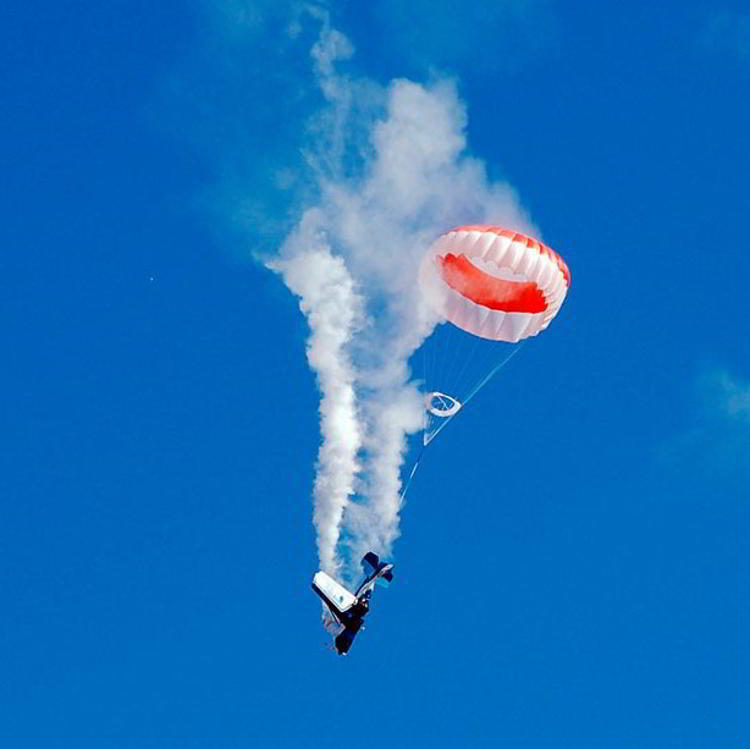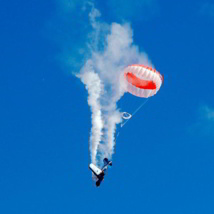Germany – 06 April 2015 – The contributor of Forbes, Mr. Bruce Dominey, reports that last week’s catastrophic crash of German aircraft A320 could have been prevented by the airframe parachutes. Dominey says thanks to a company, who were among the founders of aerospace manufacturers, today aircrafts can be deployed safely while the pilot can rescue his life unhurt. The said company began to manufacture “airframe parachutes for general aviation”. In fact it even said that further research into this technology can even find a novel guarding mechanism against hurling one aviator into another.
According to Forbes, the public, nevertheless, was quite disturbed about the safety of air travel. However, even the Global Trade Association, or the IATA, also announced that it is time to bring airframe parachutes into commercial airline industry. As a result, the passengers separately will not have to harness themselves into parachutes; instead the entire aircraft will be safely landed in time of fatal emergencies like structural or mechanical failures, mid-air collision, pilot error or incapacity, and bird strikes.
The C.E.O. of BRS Aerospace at Minneapolis, Boris Popov, informed:
“The sky is going to get more and more crowded and there are going to be even more and more accidents”.
Therefore, sometimes in the near future, airframe manufacturing units will have to adapt parachutes operating equipments as their standard practice. Moreover, the company of Popov has been suggesting the option of airframe parachutes from the year of 1993. It has been tested that the airframe parachutes inflate even at a low altitude like 260 feet. So far, it has been seen that aircrafts availing parachute equipments have managed to save more than three hundred people’s lives.
Popov notes further that their parachute system opens instantaneously. The said system incorporates “rocket-propelled parachutes”, placed at the rear end of the aircraft which can accelerate upto “100 mph” and within a second, it provides a canopy stretching tightly over the airplane. As the airborne machine finds its stability, it starts to descend at the rate of twenty one feet second, enabling it to touch the ground with a force which is equal to jumping from a height of seven feet.
One of the challenges faced to commercialise this product is to find an economical balance with a feasible length of cloth to support the weight of the aircraft. Popov says this field has to be experimented with nanotechnology fabrics which are stronger than steel and lighter than “ripstock nylon”. He says:
“If our parachute tech exceeds 15 percent of the airplane’s value, then buyers start to back off very quickly... It basically requires a square foot of material to bring down one pound of aircraft. For a 500,000-pound Boeing 757, you’ll need half a million square feet of parachute cloth.”
Moreover, Popov will take the next phase to experimenting with “GPS-directed, steerable parachutes that can automatically steer an ailing aircraft away from ground hazards”; so as to have more control over the landing.
There are further plans of Popov, to introduce “smart chutes” that will allow an aircraft to be taken over by artificial intelligence and to be safely landed in a pre-programmed area. This technology is to prevent safety measures in instances of hijacks or sabotage. Internally placed complex algorithms would sense any malfunction of the aircraft like approaching terrain at under or over speed limits, a lack of normal communication with the flight deck, or going badly off the designated course, and trigger an automatic airframe parachute deployment.
References:
http://www.forbes.com/sites/brucedorminey/2015/03/28/time-for-jetliners-equipped-with-airframe-parachutes/
Airframe Parachutes To Prevent Aerial Accidents Along With Hijacking Threats
04/05/2015 - 13:32
Boris Popov announces his future plans of commercialising airframe parachutes. The pioneering figure also states that parachutes are going to be standardised operational aspects in the near future as a safety measure to the growing air traffic.
More
Thursday, April 3rd 2025 - 02:55 Dubai schedules commercial launch of unmanned cars for 2026 |
Friday, February 28th 2025 - 05:16 CNBC: Meta will release standalone app with AI-based chatbot |
Most Popular
Innovation & tools
Innovation & Tools
Dubai schedules commercial launch of unmanned cars for 2026
CNBC: Meta will release standalone app with AI-based chatbot
SpaceX successfully launches Athena module with cellular communication station to the Moon
South Korea ramps up training for artificial intelligence specialists
Discovery



















